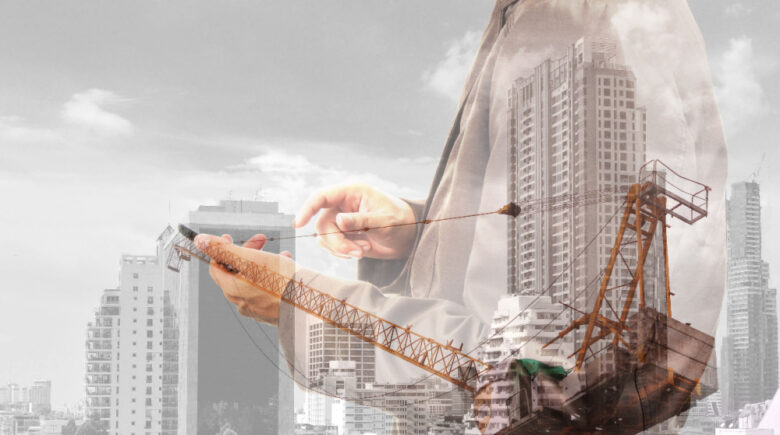The infrastructure that lays the groundwork for society. It is what makes up the buildings, roads, bridges, dams, and power plants that make up our world. Infrastructure can be moving or static. It can be created or natural.
Even though it might appear that we don’t give much thought to infrastructure on a daily basis unless there is a problem, like an earthquake, it is essential to our current and future progress. There is a good reason why infrastructure is at the forefront of public policy. State governments have a vested interest in ensuring that it is carried out correctly because of its significance to society. It is frequently expensive to build and maintain.
A brief overview of some of the most significant types of infrastructure, their functions, their regulators, and their environmental standing are provided here.
1. Transportation
The most visible type of infrastructure on a daily basis is transportation infrastructure. Airplanes, trains, and automobiles are all modes of transportation that require construction, maintenance, and repair. In order to keep people who enter and exit airports safe and secure, airports require a significant amount of policing. The Federal Aviation Administration, or FAA, is in charge of airports and oversees airport roads. The Federal Aviation Administration, or DOT, is governed by the DOT.
2. Telecommunications
Cell phone towers, telephone poles, and submarine cables are just a few examples of infrastructure for telecommunications. Due to the significance of these infrastructures’ services, there is typically a high rate of regulation and oversight in the telecom sector. The Federal Communications Commission sets standards for all infrastructures and makes sure that the right technology is used. It also makes special allowances for technologies that cannot or should not be used under certain conditions.
3. Bridges
Another kind of infrastructure that needs to be maintained on a regular basis are bridges. Concrete, which is typically the most common material, or metal can be used to construct bridges themselves. Bridges can be supported by cables and towers; Even a girder bridge that combines the two is known as one. Ships can safely navigate through bodies of water and islands that are separated by bridges. Perhaps the most frequently utilized piece of infrastructure is bridges. Bridges with a lot of traffic have a lot of traffic; As a result, they require more upkeep and maintenance. Also, bridges that aren’t used as much as others might need less care and maintenance.
4. Energy and Power
Power is an infrastructure type that we all use on a daily basis. Hydroelectricity, thermal power, nuclear power, and other forms of energy are all produced and distributed by power plants. Cables that carry electricity from power plants to other parts of the country or world are another responsibility of power plants. Even though cleaner energy sources like solar and wind power are taking the place of traditional energy infrastructures like coal and nuclear power, there is still a need for infrastructure that is used to produce and distribute electricity.
5. Railways
It is undisputed that the infrastructure of railways, particularly high-volume railways, requires extensive upkeep and maintenance. Both freight trains and passenger trains frequently utilize the railways. In order for trains to get where they need to go safely and effectively, railway infrastructure is required. Trains may be powered by electric or diesel engines. Diesel fuel lines are required when they are powered by diesel, and they need to be maintained. Additionally, when a train is powered by electricity, towers and electric wires must be maintained along the railway.
6. Roadways
The majority of travelers use roads every day. Roadways are another type of infrastructure. Roadways are used by cars, buses, trains, and trucks, but freight trains typically use railroads more frequently. Construction and upkeep are also required for these transportation systems. There may be multiple lanes running in each direction on highways or expressways. Reconstruction and resurfacing of streets and highways are necessary for constantly traveled roadways.
7. Water
Water systems are essential infrastructure, particularly for towns and cities. River systems, creeks, and streams are all examples of water systems. River systems are connected to other large bodies of water, like lakes and oceans, like the Mississippi River. For water sources to continue to be sustainable, it is frequently necessary to address the issue of water supply. Regular maintenance of pipes, hydrants, and reservoirs is necessary to keep water clean. For the continued health and well-being of plant and animal life, a steady supply of clean, filtered water is essential. Water systems, like those on land, need to be upgraded and maintained to stay in operation.
8. Waste Management
The human, plant, and animal health is dependent on the waste management system. The processing and removal of waste materials that would otherwise pollute or contaminate the environment is part of waste management. There are a variety of sources of waste, including industrial byproducts, agricultural waste, and municipal solid waste. In order to keep the ecosystem in good health, solid waste can be recycled or burned. Wastewater collection systems transport garbage to a treatment facility, where toxic substances can be removed before it is disposed of, after removing harmful substances.
9. Facilities for Recreation
Facilities are places where people can exercise and plants and animals can live. Recreational facilities include museums, zoos, aquariums, gardens, and other tourist attractions. With each new season or year, recreational facilities require extensive upkeep, maintenance, and repair. Museum curators secure the items in the facility for protection and long-term usability while wildlife rangers protect the animals. To ensure that severe weather or other natural disasters do not compromise public safety, parks must be regularly maintained.
Conclusion
As can be seen, in order to continue functioning properly, each of these types of infrastructure requires consistent upkeep, maintenance, and repair. The organization and implementation of these restorations are frequently overseen by the government. For many infrastructures to work as intended, other infrastructures are necessary. Waste management will not be possible without water treatment facilities because there would be no effective way to remove harmful substances that could contaminate the water supply.
The infrastructure that lays the groundwork for society. It is what makes up the buildings, roads, bridges, dams, and power plants that make up our world. Infrastructure can be moving or static. It can be created or natural.
Even though it might appear that we don’t give much thought to infrastructure on a daily basis unless there is a problem, like an earthquake, it is essential to our current and future progress. There is a good reason why infrastructure is at the forefront of public policy. State governments have a vested interest in ensuring that it is carried out correctly because of its significance to society. It is frequently expensive to build and maintain.
A brief overview of some of the most significant types of infrastructure, their functions, their regulators, and their environmental standing are provided here.
1. Transportation
The most visible type of infrastructure on a daily basis is transportation infrastructure. Airplanes, trains, and automobiles are all modes of transportation that require construction, maintenance, and repair. In order to keep people who enter and exit airports safe and secure, airports require a significant amount of policing. The Federal Aviation Administration, or FAA, is in charge of airports and oversees airport roads. The Federal Aviation Administration, or DOT, is governed by the DOT.
2. Telecommunications
Cell phone towers, telephone poles, and submarine cables are just a few examples of infrastructure for telecommunications. Due to the significance of these infrastructures’ services, there is typically a high rate of regulation and oversight in the telecom sector. The Federal Communications Commission sets standards for all infrastructures and makes sure that the right technology is used. It also makes special allowances for technologies that cannot or should not be used under certain conditions.
3. Bridges
Another kind of infrastructure that needs to be maintained on a regular basis are bridges. Concrete, which is typically the most common material, or metal can be used to construct bridges themselves. Bridges can be supported by cables and towers; Even a girder bridge that combines the two is known as one. Ships can safely navigate through bodies of water and islands that are separated by bridges. Perhaps the most frequently utilized piece of infrastructure is bridges. Bridges with a lot of traffic have a lot of traffic; As a result, they require more upkeep and maintenance. Also, bridges that aren’t used as much as others might need less care and maintenance.
4. Energy and Power
Power is an infrastructure type that we all use on a daily basis. Hydroelectricity, thermal power, nuclear power, and other forms of energy are all produced and distributed by power plants. Cables that carry electricity from power plants to other parts of the country or world are another responsibility of power plants. Even though cleaner energy sources like solar and wind power are taking the place of traditional energy infrastructures like coal and nuclear power, there is still a need for infrastructure that is used to produce and distribute electricity.
5. Railways
It is undisputed that the infrastructure of railways, particularly high-volume railways, requires extensive upkeep and maintenance. Both freight trains and passenger trains frequently utilize the railways. In order for trains to get where they need to go safely and effectively, railway infrastructure is required. Trains may be powered by electric or diesel engines. Diesel fuel lines are required when they are powered by diesel, and they need to be maintained. Additionally, when a train is powered by electricity, towers and electric wires must be maintained along the railway.
6. Roadways
The majority of travelers use roads every day. Roadways are another type of infrastructure. Roadways are used by cars, buses, trains, and trucks, but freight trains typically use railroads more frequently. Construction and upkeep are also required for these transportation systems. There may be multiple lanes running in each direction on highways or expressways. Reconstruction and resurfacing of streets and highways are necessary for constantly traveled roadways.
7. Water
Water systems are essential infrastructure, particularly for towns and cities. River systems, creeks, and streams are all examples of water systems. River systems are connected to other large bodies of water, like lakes and oceans, like the Mississippi River. For water sources to continue to be sustainable, it is frequently necessary to address the issue of water supply. Regular maintenance of pipes, hydrants, and reservoirs is necessary to keep water clean. For the continued health and well-being of plant and animal life, a steady supply of clean, filtered water is essential. Water systems, like those on land, need to be upgraded and maintained to stay in operation.
8. Waste Management
The human, plant, and animal health is dependent on the waste management system. The processing and removal of waste materials that would otherwise pollute or contaminate the environment is part of waste management. There are a variety of sources of waste, including industrial byproducts, agricultural waste, and municipal solid waste. In order to keep the ecosystem in good health, solid waste can be recycled or burned. Wastewater collection systems transport garbage to a treatment facility, where toxic substances can be removed before it is disposed of, after removing harmful substances.
9. Facilities for Recreation
Facilities are places where people can exercise and plants and animals can live. Recreational facilities include museums, zoos, aquariums, gardens, and other tourist attractions. With each new season or year, recreational facilities require extensive upkeep, maintenance, and repair. Museum curators secure the items in the facility for protection and long-term usability while wildlife rangers protect the animals. To ensure that severe weather or other natural disasters do not compromise public safety, parks must be regularly maintained.
Conclusion
As can be seen, in order to continue functioning properly, each of these types of infrastructure requires consistent upkeep, maintenance, and repair. The organization and implementation of these restorations are frequently overseen by the government. For many infrastructures to work as intended, other infrastructures are necessary. Waste management will not be possible without water treatment facilities because there would be no effective way to remove harmful substances that could contaminate the water supply.



